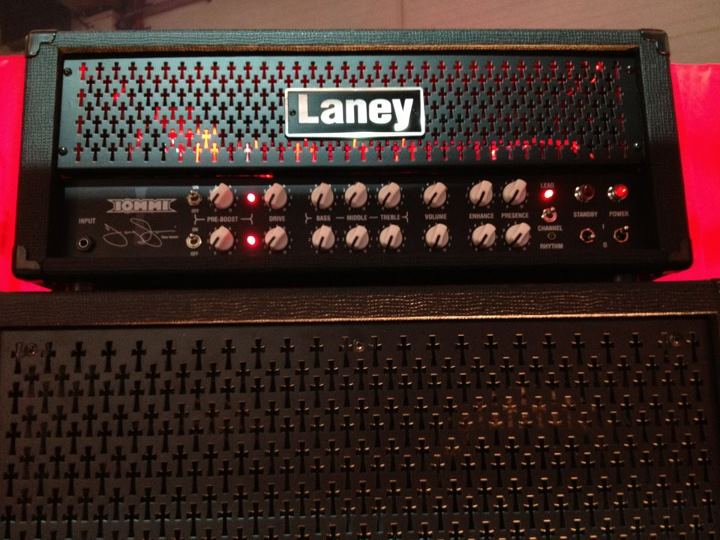Laney GH100TI Tony Iommi Valve Guitar Amp Head at Musikmesse 2012

Laney Amplification officially began on September 1st, 1967.
As a bassist playing the local circuits with the likes of Robert Plant and John Bonham, Lyndon Laney decided to turn his hand to building amplifiers for friends in his parents’ garden shed. Some of Lyndon’s first customers were local Birmingham-based guitar players such as Tony Iommi of Black Sabbath who remains loyal to Laney to this day. Many of the first Laney amplifiers ever built are still around and in use, slowly becoming as revered as other vintage amplifiers by Marshall and Fender for their pure valve-driven tone.
Laney GH100TI Tony Iommi Valve Guitar Amp Head at Musikmesse 2012
Laney Amplification officially began on September 1st, 1967.
As a bassist playing the local circuits with the likes of Robert Plant and John Bonham, Lyndon Laney decided to turn his hand to building amplifiers for friends in his parents’ garden shed. Some of Lyndon’s first customers were local Birmingham-based guitar players such as Tony Iommi of Black Sabbath who remains loyal to Laney to this day. Many of the first Laney amplifiers ever built are still around and in use, slowly becoming as revered as other vintage amplifiers by Marshall and Fender for their pure valve-driven tone.
The late 1960s/early 1970s range consisted of a small number of amplifiers, but with a dedicated following. The original LA100BL all-valve model was the choice of many players wanting a more ‘heavy metal’ guitar sound than other popular amplifiers. Laney also created a series of amplifiers known as KLIPP, which featured a built-in treble booster similar to the Dallas Rangemaster. KLIPP amps offer excellent versatility and durability, and are sought after especially by collectors in the USA vintage market.
The quest for more gain while still retaining a natural all-valve tone became the driving force behind Laney’s 1980s range of amplification. Laney was at the forefront of amp design when it came to this ‘hot-rodded’ sound. A line called “AOR”, short for Advanced Overdrive Response, introduced an extra stage of preamp gain while still retaining a pure signal path. Whereas amplifiers from other competitors like Marshall were being modified after purchase, Laney offered this extra stage as a stock feature.
Throughout the 1990s Laney continued to build on its reputation for innovation: by the middle of the decade products such as the VC30 were released (a retro-style Class A valve combo reminiscent of the famous Vox AC30, but with more features), the VC50/VC100 combos with two channels, each with a separate boost for adding more gain and volume effectively offering a player four different sounds, and the single channel GH50L/GH100L stacks which are among the best-selling models ever made by the company. They also during this time bought HH Electronics. Introduced in this period was the Tube Fusion series – combining solid state power amplification with valve pre-amplication and also incorporating DSP elements to add modulation/delay effects in one package.
 |
 |
 |


